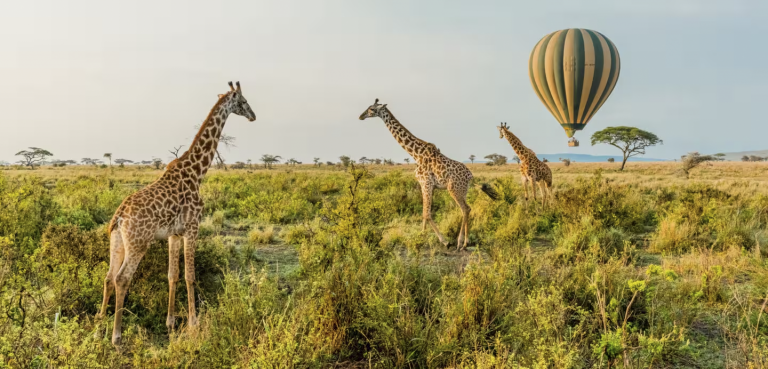The Serengeti National Park serves as a spot for some of the most spectacular wildlife on Earth. Stretching over 14,750 square kilometres in northern Tanzania, the iconic national park is a symbol of African wilderness and a UNESCO World Heritage Site since 1981.

Source: www.americanexpress.com
The Serengeti is renowned for its diverse landscapes, ranging from open savannas to wooded hills and acacia-dotted plains. The name is derived from the Maasai language and translates to „endless plains,“ a fitting description for a place that hosts one of the most diverse wildlife migrations in the world. Every year, around two million wildebeests, accompanied by hundreds of thousands of zebras and gazelles, do what’s known as the Great Migration in search of fresh grazing lands.
The Serengeti has an incredible concentration of wildlife, making it a top destination for wildlife enthusiasts and photographers alike. Visitors to the park have the chance to encounter the famous „Big Five“ – lions, elephants, buffalo, leopards, and rhinoceros – along with numerous other species, such as cheetahs, giraffes, hippos, hyenas, and more. The diversity of the Serengeti’s fauna is a testament to the park’s well-preserved ecosystem.
For photographers, the Serengeti is a dream come true. The grasslands, coupled with the sunsets over the horizon, create a mesmerizing backdrop. Whether it’s the thrill of a lioness hunting her prey, a group of elephants bathing in a watering hole, or the sheer majesty of a solitary leopard perched on a tree branch, the Serengeti offers a lot of opportunities to immortalize the wonders of nature through the lens.
Despite the constant challenges posed by poaching and human-wildlife conflicts, the Tanzanian government, along with various conservation organizations, has made tremendous efforts to protect the Serengeti’s ecosystem. The park serves as a vital refuge for many endangered species, including the black rhinoceros and African wild dog. Furthermore, local communities play a crucial role in safeguarding the area’s biodiversity through sustainable tourism and conservation initiatives.
With its increasing popularity, responsible tourism has become vital for preserving the Serengeti’s natural wonders for future generations. Visitors are encouraged to follow strict guidelines to minimize their impact on the environment and respect the park’s wildlife. Local guides and lodges often play an essential role in educating tourists about the significance of conservation efforts and the importance of respecting the animals‘ natural habitat.



